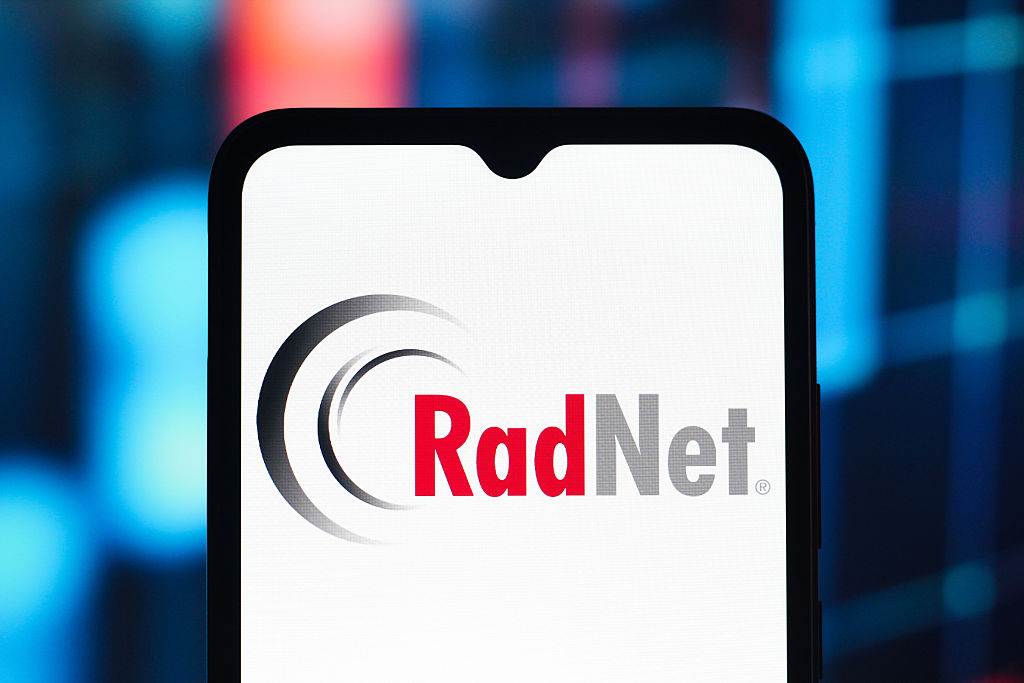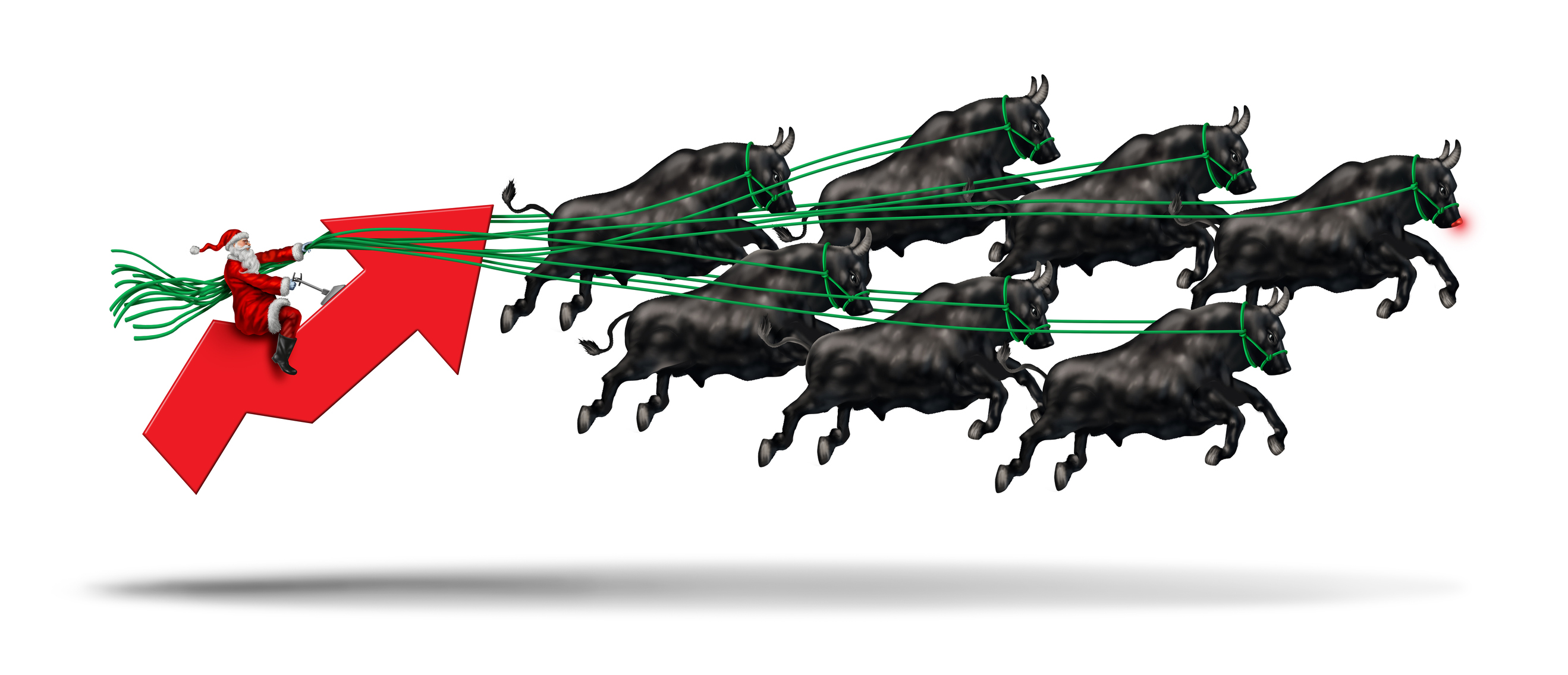Coulda, Woulda, Shoulda: Are These 5 Stocks Too Overvalued to Buy Now?
Investors worried about missing the boat on overvalued stocks need not fret. These five names, while expensive, are still seeing lots of love from analysts.


Occasionally, an editor will pitch a story that sounds like absolute bait – like, say, my editor tossing me the topic "overvalued stocks to buy."
It's a seemingly silly premise – one that is practically begging me to joke around while I point and laugh at ludicrously priced stocks that Wall Street seems to love anyway.
Well, ha-ha, joke's on her! I have a perfectly mature argument as to why looking for expensive stocks is a legitimate way to find compelling equity ideas.
From just $107.88 $24.99 for Kiplinger Personal Finance
Become a smarter, better informed investor. Subscribe from just $107.88 $24.99, plus get up to 4 Special Issues

Sign up for Kiplinger’s Free Newsletters
Profit and prosper with the best of expert advice on investing, taxes, retirement, personal finance and more - straight to your e-mail.
Profit and prosper with the best of expert advice - straight to your e-mail.
Read on, and I'll introduce you to five wildly overvalued stocks that the analysts are actually very bullish on right now.
Data is as of August 25.
OK. I'll bite. Why should I buy overvalued stocks?
Investors split the stock market up in numerous ways, and one of those bifurcations is growth vs value. And if you take a minute to think about it, it's silly.
What's the actual opposite of a growth stock? A company whose financials are either growing more slowly than average or retreating. What's the actual opposite of a value stock? An expensive stock.
They're not polar opposites. Slow- and no-growth stocks can trade at a premium, and you can find inexpensive values. Heck, there's a common term for the latter: "growth at a reasonable price," or GARP.
But we're not all absolutists. Growth vs value is about tendencies. Growth stocks tend to be overpriced. Value stocks tend to be less "growthy." And these tendencies are common enough that sometimes the absence of one trait is enough to confirm the other.
In fact, the first thing that sprang to mind as I accepted this assignment was something I wrote in my analysis of Schwab index funds about how the Schwab U.S. Large-Cap Growth Index Fund (SWLGX) is constructed (emphasis mine):
"SWLGX tracks the Russell 1000 Growth Index, which consists of any Russell 1000 companies that sport higher I/B/E/S forecast two-year earnings growth, higher five-year historical growth in sales per share, and relatively higher price-to-book (P/B) ratios."
In other words, this Schwab fund's tracking index, in trying to determine what stocks are acceptable for inclusion, doesn't just try to identify certain growth characteristics – it also looks for the absence of value.
And it's not alone. This is the case for numerous funds, which collectively command billions of dollars of assets.
However, I'm not suggesting you should buy companies just because they're overvalued on the logic that expensive = growth.
I'm simply pointing out that if you look at a group of overpriced stocks, you'll probably find some growth names. And that's what we're going to do today.
What are we looking for in these overvalued stocks?
The best way to narrow the market's thousands of stocks into a more digestible group of potential picks is a simple screen, which you can do by either looking for certain characteristics or weeding them out.
We recently looked at five undervalued stocks to buy, and we're essentially using a flipped version of those screening criteria for today's bundle of anti-value stocks:
Market value of $500 million or above: We're not really looking to stack risk on risk – if we're seeking out overvalued stocks, we felt it would be responsible not to chase diminutive small- and micro-cap stocks.
Forward P/E above the S&P 500 and the sector average: It's not enough for a stock to be more expensive than the S&P 500 – entire sectors are pricier than the market right now. So we wanted to ensure every stock here is expensive compared to its peers, too.
PEG above 2.9: Price/earnings-to-growth (PEG) is another valuation metric – one that doesn't just evaluate the stock's price in a bubble, but in relation to its earnings-growth prospects.
A PEG of 1.0 indicates a stock is fairly valued, above 1.0 indicates it's overvalued and below 1.0 indicates it's undervalued. We like PEG because it allows you to value a stock without needing to compare it to anything else … but if you choose to compare it to anything else, it's a fairer standard given that, unlike any other valuation metric, it actually accounts for growth.
The S&P 500 has a PEG of 1.46 right now, which is both nominally overvalued and a little high compared to its long-term range.
Every stock that made the cut trades at a PEG that's at least double this, making them expensive by virtue of the PEG calculation, as well as relative to the market.
A consensus Buy rating: We're looking for stocks that, despite the ugly metrics above, still garner a broker recommendation of 2.5 or less within S&P Global Market Intelligence's ratings scale.
S&P Global Market Intelligence converts analysts' ratings into a numerical scale. Anything with a score of 2.5 or less is considered a Buy.
And we chose only those stocks with a rating of 2.0 or less, which means Wall Street isn't anywhere near the fence – they love these luxury-priced names.
Let's take a look, with stocks listed from "cheapest" to most expensive by forward P/E.
S&P Global

- Sector: Financial
- Market value: $168.4 billion
- Forward P/E: 28.7
- PEG: 2.8
- Dividend yield: 0.7%
S&P Global (SPGI, $550.73) is the name behind S&P Dow Jones Indices – which means it's the name behind the S&P 500, the Dow Jones Industrial Average, and a host of other market indexes that serve as the benchmarks for thousands of products that represent literally trillions of dollars in managed assets.
And it's a lot more than that. Its other arms include S&P Global Ratings (credit ratings), S&P Global Commodity Insights (commodity benchmarks, pricing, research, analytics and consulting), S&P Global Mobility (automotive intelligence) … and even S&P Global Market Intelligence, which we at Kiplinger use to screen and research stocks for many of our articles.
SPGI eventually will be down to four arms, however, as the company has announced it plans on spinning off Mobility to unlock value there – and, one assumes, lean more heavily into its faster-growing arms.
That likely means more attention for S&P Dow Jones Indices, which continues to benefit from worldwide growth in passive investing and index funds. For instance, SPGI reported that in the second quarter, the index business expanded its top line by 15% – the best of all five arms.
S&P Global has delivered a steadily rising top line for years; profit growth hasn't been as consistent, but the arrow has largely been pointed in the right direction.
That has helped SPGI apply continued upward pressure on its distribution, which has improved without interruption for 52 years – good enough not only to qualify as an S&P 500 Dividend Aristocrat (25-plus years of dividend growth), but a Dividend King (50-plus).
Shares, on the other hand, haven't been all that much to crow about, delivering market-trailing returns for the past few years. Despite this, SPGI is quite pricey, at a PEG of nearly 3 and a forward P/E that's well ahead of the financial sector's average of around 16.
Wall Street says "no problem!"
"We believe SPGI is poised to outperform as: 1) the ratings segment remains supportive, 2) Market Intelligence should accelerate in a better end market environment, and 3) the outlook for the other segments remains solid," says UBS analyst Alex Kramm, who is one of 22 analysts with a Buy call on the stock (versus two Holds and no Sells). "We are also bullish on new growth opportunities, such as sustainability and energy transition, private markets, and the recent Visible Alpha [investment research software] acquisition."
In fact, not only is SPGI a Dividend Aristocrat – based on consensus broker recommendation, it's the best-rated Dividend Aristocrat right now.
Walmart

- Sector: Consumer staples
- Market value: $766.7 billion
- Forward P/E: 32.6
- PEG: 4.1
- Dividend yield: 1.0%
Fellow Aristocrat Walmart (WMT, $96.07) needs no introduction, but we'll introduce it anyway.
The Bentonville, Arkansas-headquartered big-box chain is the world's largest retailer, boasting more than 4,600 Walmart locations in the U.S. and almost 5,600 around the globe, not to mention about 600 U.S. Sam's Club warehouse stores (a number that's expected to grow).
It's also a juggernaut of the consumer defensive space. It has delivered not just an element of defense and dividend growth – matching SPGI at 52 years and running – but also long-term outperformance versus the market. That includes an outstanding two-year run that has seen shares roughly double the S&P 500 on a total return basis (price plus dividends).
WMT has hit a bit of a snag of late, however. The company just reported second-quarter earnings. They were generally very good; U.S. same-store sales were up 4.6%, revenue was ahead of estimates, and the retailer upgraded its full-year revenue and profit guidance.
However, it still wasn't enough to satisfy investors, who sold off to the tune of more than 4%.
The drop even prompted a response from Walmart U.S. CEO Bill Simon, who said on CNBC's "Fast Money", that "it was about as good of a quarter as any retailer could have in any environment. I don't get the decline in the market today at all."
To be fair, Walmart was richly valued heading into the report, and still is. It's trading at 33 times next year's earnings estimates, which is well ahead of the consumer staples sector's 22 forward P/E. A PEG of more than 4 on modest long-term growth estimates (in the high single digits) is pretty exorbitant, too.
Still, CFRA Research analyst Arun Sundaram (Buy) agrees with Simon, calling the post-earnings selloff "an enhanced buying opportunity." He says "underlying momentum has only strengthened," noting that e-commerce profitability is improving faster than expected.
And he is hardly alone in his bullishness. Walmart has a whopping 39 Buys against just one Hold and one Sell.
Mirion Technologies

- Sector: Information technology/Industrials
- Market value: $4.8 billion
- Forward P/E: 36.1
- PEG: 3.6
- Dividend yield: N/A
Mirion Technologies (MIR, $20.71) isn't exactly a household name, and if you've ever interacted with its products, you probably didn't even know it – but when you learn what it does, you'll probably be pretty happy that it's around.
That's because Mirion deals in radiation safety, measurement and analysis.
Mirion's offerings are broken down into two segments. The first is Medical, which includes radiation oncology quality assurance solutions, patient safety solutions, and other products that improve the quality and safety of cancer care.
The other is Nuclear & Safety, which provides solutions for nuclear power plants (all the way from construction to decommissioning), laboratory technology, public event security and more.
The latter business could enjoy a tailwind from a coming "nuclear revolution," with the current administration releasing an executive order in May to "rapidly deploy advanced nuclear technologies to support national security objectives and support "nuclear partnerships with the private sector."
A meaningful part of that initiative is to support the growing energy demand from artificial intelligence (AI).
"Some investors have raised concerns regarding [Amazon Web Services] AI's slower growth trajectory relative to its competitors in the AI sector," say B. Riley Securities analysts Yuan Zhi and Brandon Carney, who rate the stock at Buy. "This occurred against a backdrop of heightened electricity demand, evidenced by electricity price increases >20%. We believe nuclear energy will serve a critical role in addressing this rising demand."
B. Riley is part of a small but bullish group of analysts covering Mirion – all five have Buy ratings on the stock right now.
But Zhi and Carney "[acknowledge] elevated expectations on MIR." Those expectations are reflected in an elevated PEG of 3.6, as well as a forward P/E of 36 that's higher than both the information technology and industrial sectors.
Why am I bringing up both? Because while some financial information providers consider it a tech stock, others say it's an industrial stock.
RadNet

- Sector: Health care
- Market value: $5.4 billion
- Forward P/E: 80.2
- PEG: 6.7
- Dividend yield: N/A
I'm just as surprised as you are that not one but two of the best overvalued stocks on Wall Street are radiation-themed. They also give you two different looks at radiation – while Mirion is protecting you against it, RadNet (RDNT, $69.59) is dishing it out.
OK, it's not exactly firing uranium into baseball crowds using T-shirt guns.
Instead, RadNet is a leading provider of outpatient diagnostic imaging services. It boasts 400 freestanding fixed-site outpatient diagnostic imaging centers, many of which are held within joint ventures with large health systems.
It also has a Digital Health segment that includes radiology software solutions, an AI subsidiary pursuing opportunities in cancer screening for large patient populations, and more.
RDNT shares have more than quadrupled over the past five years, largely on the back of impressive top-line growth; revenue has been on the upswing for years, with 2024's figure coming in 66% higher than 2020.
That, as well as RadNet's potential to continue eating up market share in a highly fractionalized market, has an admittedly thin coverage community (seven analysts) unanimously in the Buy camp.
"We are bullish on RDNT given the company's leading position in the sizable diagnostic imaging market, significant scale and multi-modality approach benefiting from a number of attractive secular tailwinds (e.g. demographics, site-of-care shift, [value-based care])," says Truist Securities analyst David MacDonald, who rates shares at Buy. "We view the company's JV strategy as an additional differentiator, likely driving ongoing volume growth, improved market penetration and increased contracting leverage over time. … [and] we see potential benefits through the growing AI segment (e.g. efficiency, accuracy) and solid financial flexibility."
The main hang up (for now) is profitability. The bottom line has actually trended lower over the past few years, and while Wall Street still expects green ink on an adjusted basis for this year, 1.) they expect it to be 30% lower year over year before rebounding strongly back in 2026, and 2.) on an unadjusted basis, RadNet has lost $14.5 million over the trailing 12 months.
That, as well as good-but-not-great long-term profit-growth expectations in the low double digits, helps to explain RDNT's current nosebleed valuations.
Axon Enterprise

- Sector: Industrial
- Market value: $59.9 billion
- Forward P/E: 96.5
- PEG: 4.5
- Dividend yield: N/A
Axon Enterprise (AXON, $763.52) is best known for its Taser stun gun, but it actually produces a wide variety of technological products for law enforcement, the military and civilians.
Axon's product lineup includes a range of dash-mounted patrol and body cameras, air and ground drones, even hardware and pods for virtual-reality training.
But it's increasingly supplementing those products with software solutions for needs such as policy information, digital evidence management and officer compliance.
Military spending has grown significantly over the long term, but the same also applies to state and local law enforcement.
While most figures tend to lag a few years, spending on policing (on an inflation-adjusted basis) has jumped by 189% between 1977 and 2021.
That's reflected in Axon's sales, which have grown every year without interruption since 2011, and which have tripled between 2020 and 2024.
AXON doesn't have quite as lengthy a track record on its bottom line, but the past few years have seen profits explode from a marginal loss in 2020 to $147 million in 2022, $175 million in 2023, then $377 million in 2024.
None of this is any secret to Wall Street, which has bid AXON shares higher by a breathtaking 835% over the past five years. My oh my. That's eight times better than the S&P 500, and better than any other stock on this list by a country mile.
And Wall Street remains wild about this stock, with 18 Buys outnumbering a pair of Holds and nary a Sell. That bull camp includes BofA Global Research, which in early August raised its price target to a Street-high $1,000.
"We continue to see Axon benefitting in core police markets as the TASER10 refresh cycle continues, adoption of DraftOne and the AI-Era plan builds momentum, and new markets (DFR, C-UAS, and Enterprise) are accelerating," a BofA research team writes. "We continue to see the company as a leader in the broader safety market continuing to grow meaningfully in core and new markets."
That price target implies 30% upside – more generous than the modest 13% upside implied by the consensus PT.
The question, of course, is whether Axon can keep justifying its premium price. The pros expect long-term profit growth of 20% annually, which is great on its own, but not as great when set alongside a nearly triple-digit forward P/E.
That helps explain a PEG of nearly 5, which implies that even with its growth factored in, AXON shares are mighty frothy.
Related content
Profit and prosper with the best of Kiplinger's advice on investing, taxes, retirement, personal finance and much more. Delivered daily. Enter your email in the box and click Sign Me Up.
Kyle Woodley is the Editor-in-Chief of WealthUp, a site dedicated to improving the personal finances and financial literacy of people of all ages. He also writes the weekly The Weekend Tea newsletter, which covers both news and analysis about spending, saving, investing, the economy and more.
Kyle was previously the Senior Investing Editor for Kiplinger.com, and the Managing Editor for InvestorPlace.com before that. His work has appeared in several outlets, including Yahoo! Finance, MSN Money, Barchart, The Globe & Mail and the Nasdaq. He also has appeared as a guest on Fox Business Network and Money Radio, among other shows and podcasts, and he has been quoted in several outlets, including MarketWatch, Vice and Univision. He is a proud graduate of The Ohio State University, where he earned a BA in journalism.
You can check out his thoughts on the markets (and more) at @KyleWoodley.
-
 Don't Wait Until January: Your Year-End Health Checklist to Kickstart 2026
Don't Wait Until January: Your Year-End Health Checklist to Kickstart 2026Skip the fleeting resolutions and start the new year with a proactive plan to optimize your longevity, cognitive health, and social vitality.
-
 Premium Rewards Cards: More Perks, Higher Fees
Premium Rewards Cards: More Perks, Higher FeesSome issuers are hiking the annual fee on their flagship luxury credit cards by hundreds of dollars. Are they still worth using?
-
 3 Trips to Escape the Winter Doldrums, Including An Epic Cruise
3 Trips to Escape the Winter Doldrums, Including An Epic CruiseThree winter vacation ideas to suit different types of travelers.
-
 How to Master the Retirement Income Trinity: Cash Flow, Longevity Risk and Tax Efficiency
How to Master the Retirement Income Trinity: Cash Flow, Longevity Risk and Tax EfficiencyRetirement income planning is essential for your peace of mind — it can help you maintain your lifestyle and ease your worries that you'll run out of money.
-
 I'm an Insurance Expert: Sure, There's Always Tomorrow to Report Your Claim, But Procrastination Could Cost You
I'm an Insurance Expert: Sure, There's Always Tomorrow to Report Your Claim, But Procrastination Could Cost YouThe longer you wait to file an insurance claim, the bigger the problem could get — and the more leverage you're giving your insurer to deny it.
-
 Could a Cash Balance Plan Be Your Key to a Wealthy Retirement?
Could a Cash Balance Plan Be Your Key to a Wealthy Retirement?Cash balance plans have plenty of benefits for small-business owners. For starters, they can supercharge retirement savings and slash taxes. Should you opt in?
-
 Changes Are Coming for This Invesco Bond Fund
Changes Are Coming for This Invesco Bond FundThe Invesco BulletShares 2026 Corporate Bond ETF's bonds will mature in 2026. Here's what investors should do.
-
 7 Retirement Planning Trends in 2025: What They Mean for Your Wealth in 2026
7 Retirement Planning Trends in 2025: What They Mean for Your Wealth in 2026From government shutdowns to market swings, the past 12 months have been nothing if not eventful. The key trends can help you improve your own financial plan.
-
 What Defines Wealth: Soul or Silver? Good King Wenceslas' Enduring Legacy in the Snow
What Defines Wealth: Soul or Silver? Good King Wenceslas' Enduring Legacy in the SnowThe tale of Good King Wenceslas shows that true wealth is built through generosity, relationships and the courage to act kindly no matter what.
-
 An Investing Pro's 5 Moves to Help Ensure 2025's Banner Year in the Markets Continues to Work Hard for You in 2026
An Investing Pro's 5 Moves to Help Ensure 2025's Banner Year in the Markets Continues to Work Hard for You in 2026After a strong 2025 in the stock market, be strategic by rebalancing, re-investing with a clear purpose and keeping a disciplined focus on your long-term goals.
-
 The Santa Claus Rally Officially Begins: Stock Market Today
The Santa Claus Rally Officially Begins: Stock Market TodayThe Santa Claus Rally is officially on as of Wednesday's closing bell, and initial returns are positive.
